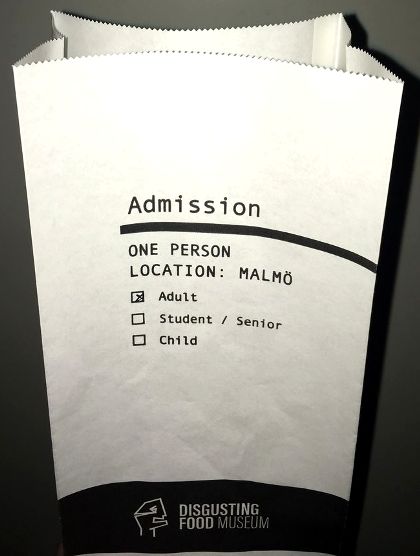

On this month's Morbidly Fascinating Page:
The Disgusting Food Museum
Real meals that other cultures eat outside of America (with one exception)
IN THE ARCHIVES:
Bat Bombs
Spanish Flu
Pompeii
The Body Farm
The First Plastic Surgery
Tombstone Symbols
WARNING:
THE PHOTOS BELOW ARE GRAPHIC
THEY ARE REAL IMAGES OF MEALS IN THE DISGUSTING FOOD MUSEUM
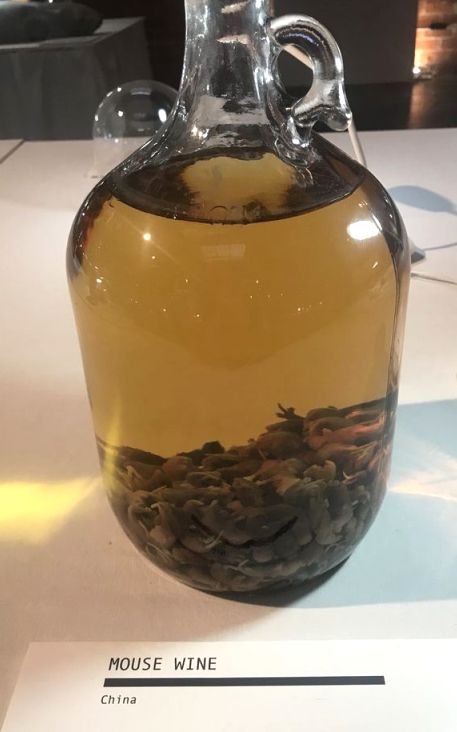
Mouse Wine
China -- When making Baby Mice Wine, one needs a) rice wine, and b) 3-day-old mice. Dozens of baby mice are bottled up, drowned alive in the wine and left to brew. After about 12 to 14 months this wine is "safe" to drink.

Fried Tarantula
Cambodia -- The spiders are tossed in a mixture of sugar and salt before being fried in a fragrant garlic oil. The spiders are crispy on the outside and have a delicious gooey middle.
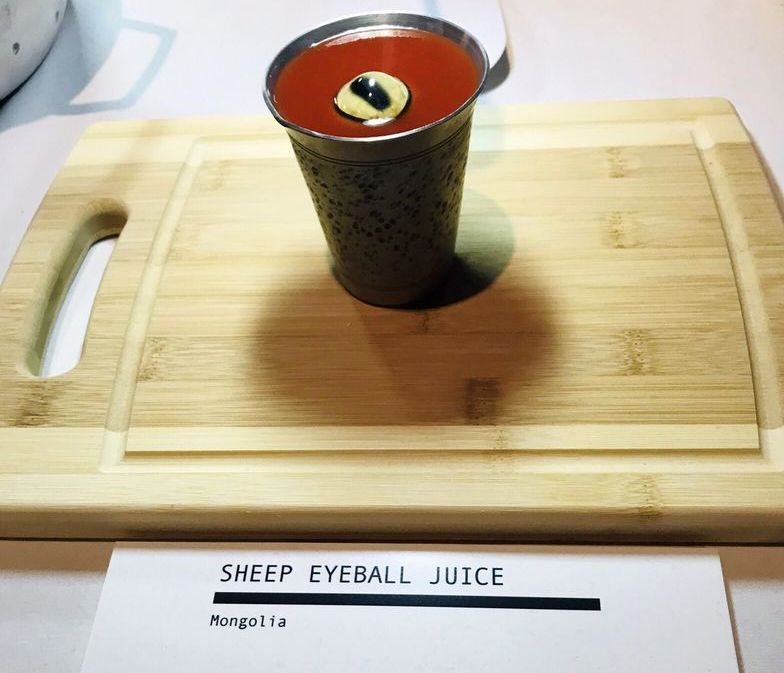

Sheep Eye Juice
Mongolia -- Also known as Mongolian Mary, this is made with pickled sheep eye and tomato juice. It is a traditional hangover cure in that country.
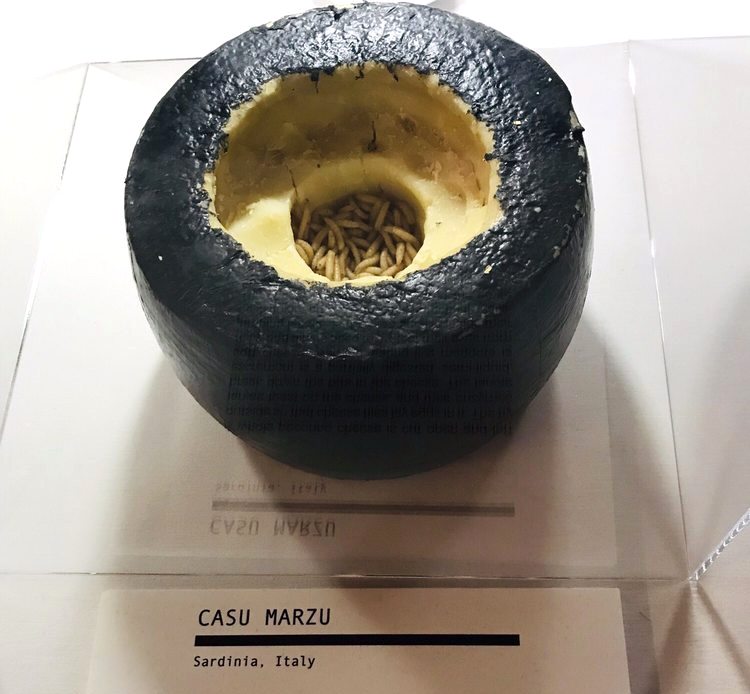
Casu Marzu
Sardinia, Italy -- A whole pecorino cheese is cut open and left outside so that cheese flies lay eggs inside which hatch into maggots. Only recently has this cheese been banned in both Italy and the European Union due to health risks.
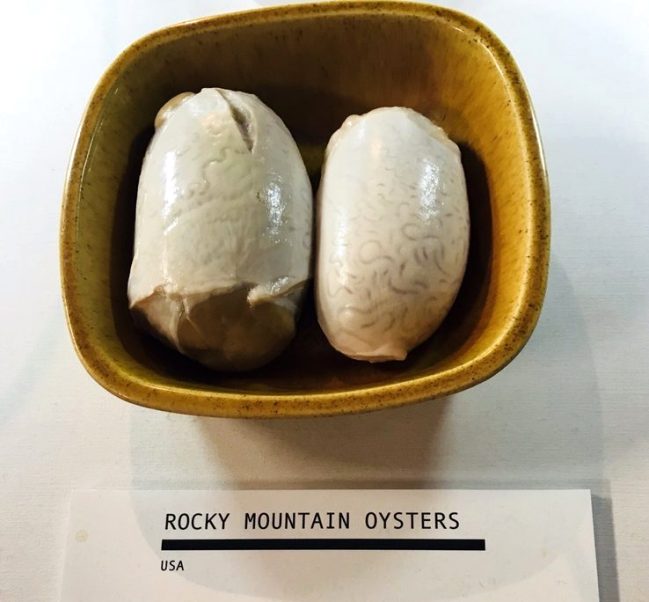
Rocky Mountain Oysters
USA -- The one food item on this menu that is actually eaten in America...in the cattle farming regions of the West. These are bull testicles that are peeled, coated in flour, and fried.
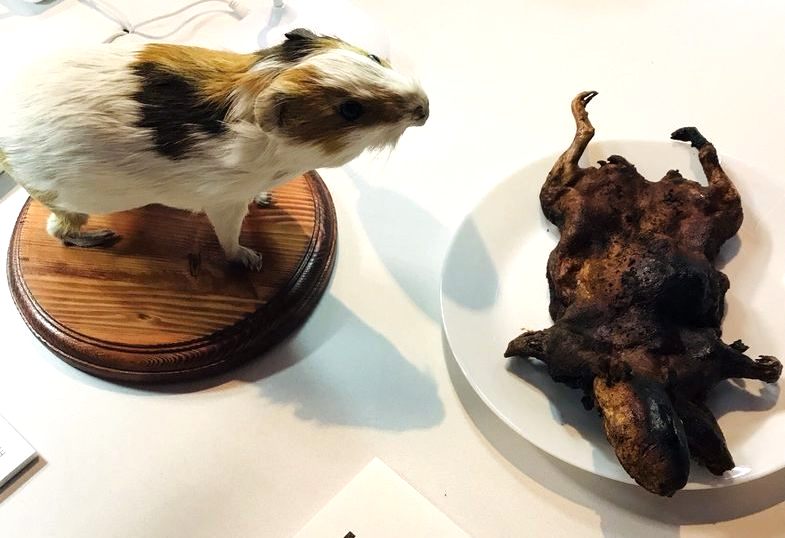
Guinea Pigs
Peru -- Guinea pigs have been raised as food in Peru for over five thousand years.
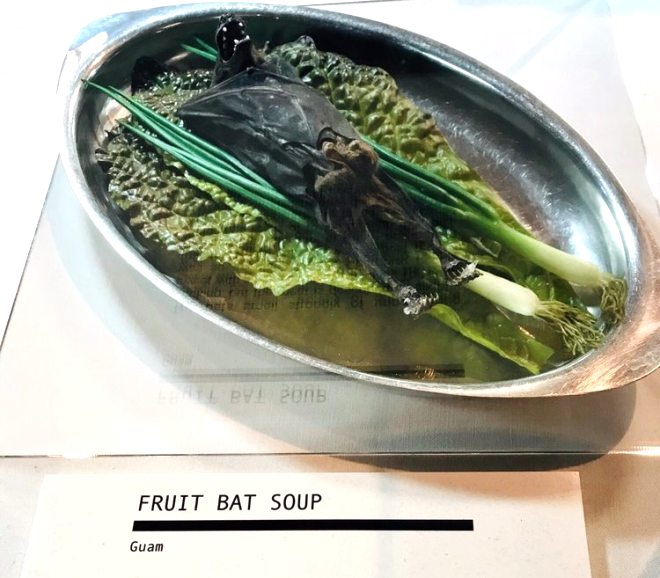
Fruit Bat Soup
Guam -- The bats smell strongly of urine during cooking, but the meat is described as slightly sweet and similar to chicken.
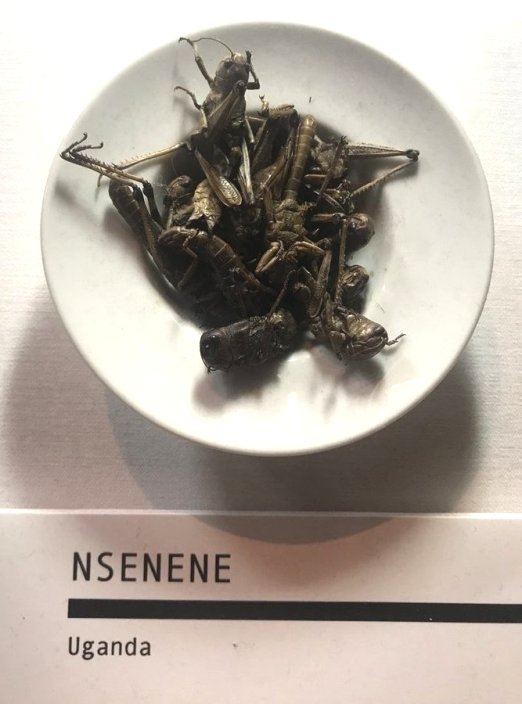
Nsenene
Uganda -- This dish is comprised of roasted grasshoppers, which are actually quite nutritious.
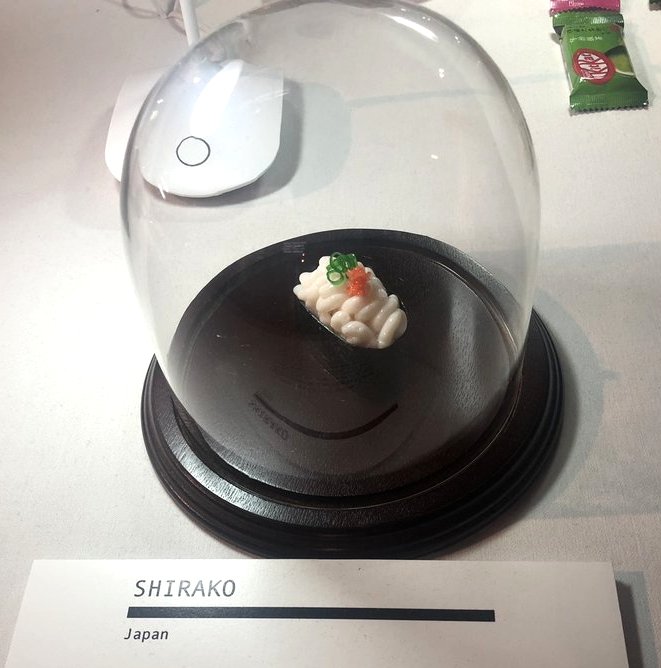
Shirako
Japan -- Fish (usually cod) sperm sacks filled with seminal fluid is steamed or eaten raw with rice. It is described as sweet and custardly.
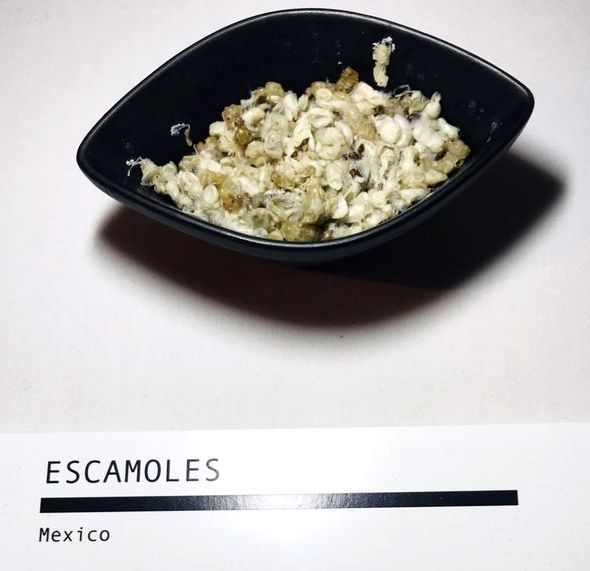
Escomoles
Mexico -- Tree ant eggs. This dish dates back to the Aztecs.
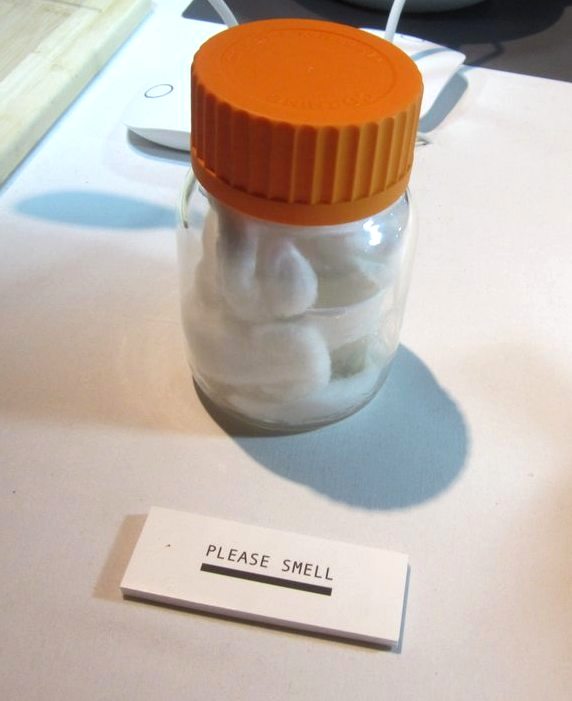
UNKNOWN!
Go to the Disgusting Food Museum web page HERE
About the Disgusting Food Museum
The Disgusting Food Museum, an exhibition from Sweden, is opening its doors for the first time in North America at the A+D Architecture and Design Museum in Los Angeles, California.
Food is so much more than sustenance. Curious foods from exotic cultures have always fascinated us. Unfamiliar foods can be delicious, or they can be more of an acquired taste. While cultural differences often separate us and create boundaries, food can also connect us. Sharing a meal is the best way to turn strangers into friends.
The evolutionary function of disgust is to help us avoid disease and unsafe food. Disgust is one of the six fundamental human emotions. While the emotion is universal, the foods that we find disgusting are not. What is delicious to one person can be revolting to another. Disgusting Food Museum invites visitors to explore the world of food and challenge their notions of what is and what isn’t edible. Could changing our ideas of disgust help us embrace the environmentally sustainable foods of the future?
The exhibit has 80 of the world’s most disgusting foods. Adventurous visitors will appreciate the opportunity to smell and taste some of these notorious foods. Do you dare smell the world’s stinkiest cheese? Or taste sweets made with metal cleansing chemicals?
Exhibited delicacies include:
- Surströmming – fermented herring from Sweden.
- Cuy – roasted guinea pigs from Peru.
- Casu marzu – maggot-infested cheese from Sardinia
- Stinky tofu – pungent bean curd from China.
- Hákarl – well-aged shark from Iceland.
- Durian – infamously stinky fruit from Thailand.
...and so much more!
There’s an old rule of thumb in the food world: Never yuck someone else’s yum. The newly opened Disgusting Food Museum subverts that rule in the name of challenging people’s notions of what is and isn’t edible, exploring the nature of disgust, and, supposedly, “[helping] us embrace the environmentally sustainable foods of the future.” The exhibit, which originally debuted in Sweden, is the brainchild of Dr. Samuel West, the psychologist behind last year’s Museum of Failure, also hosted by the A+D Architecture and Design Museum downtown.
ADMISISON TICKETS ARE PAPER BAGS FOR TAKE HOME
